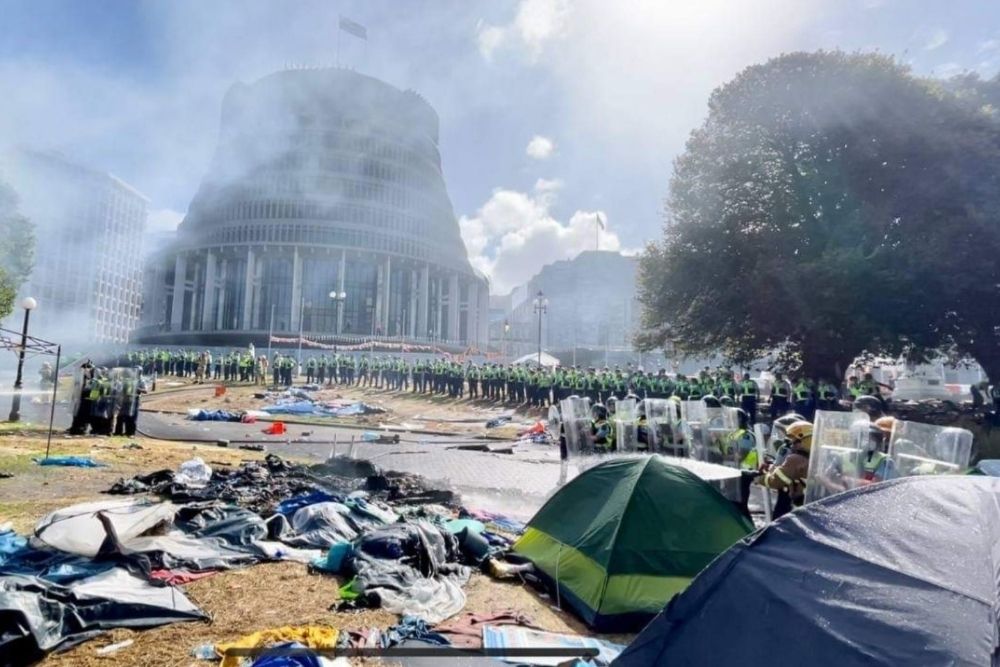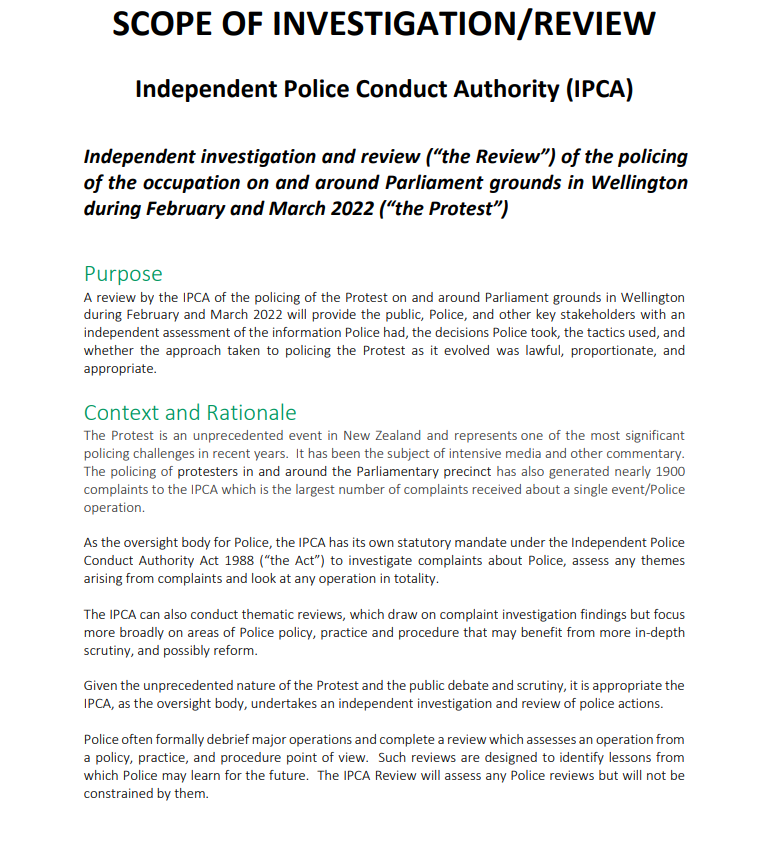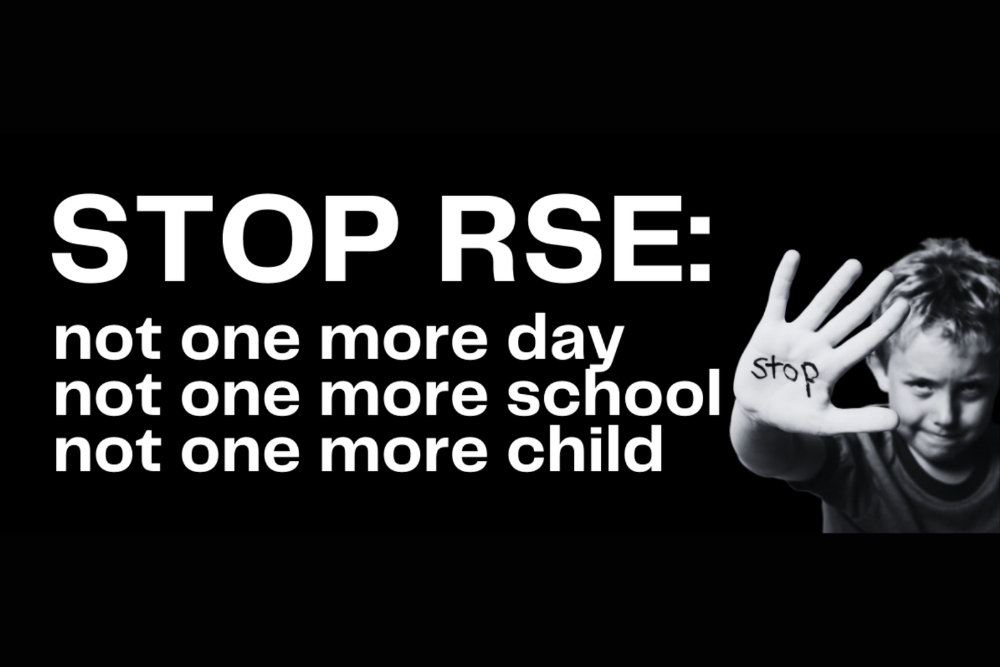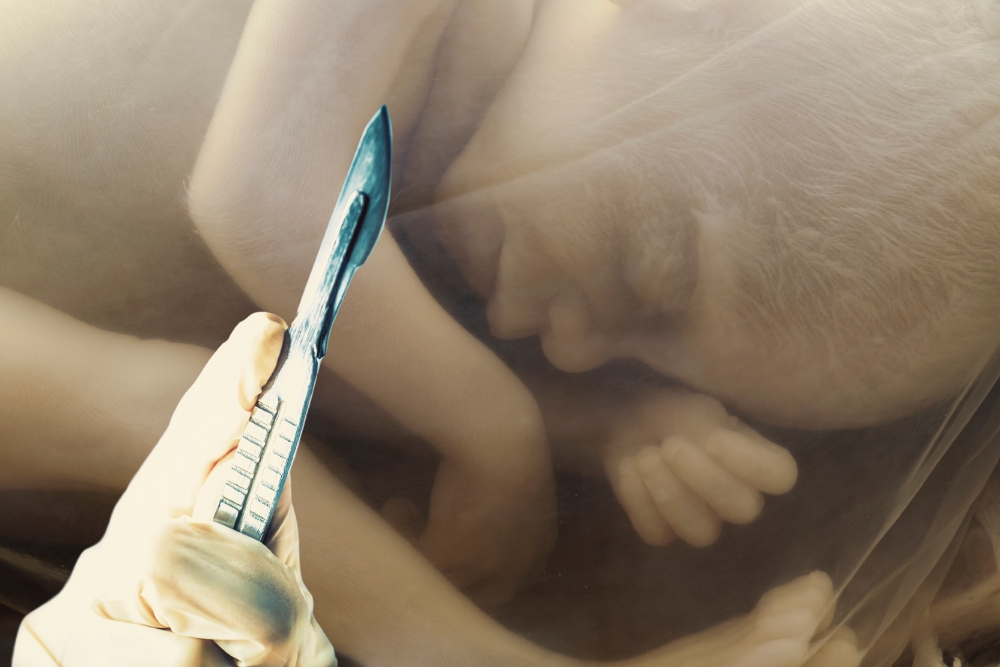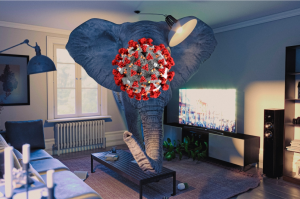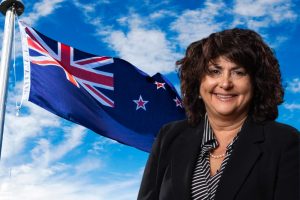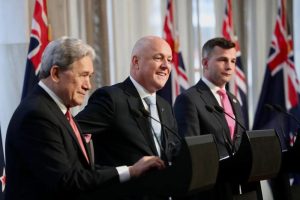On February 6, hundreds of vehicles and thousands of New Zealanders left from the top of the North Island and the bottom of the South Island journeyed into Wellington. Thus started a three-week protest against government mandates and laws that have seen significant emotional, economic, mental and democratic damage to the nation.
Over a week later, on February 15, the police activated the Major Operations Centre. This was to support the Wellington district with police describing the Freedom Protest as “unreasonably impacting the city” as justification. Oddly, as some noted, the entire Protest was set up within two streets and parliament grounds with a well-organised set-up that included toilets, cooking areas, safety controls, security teams, and even tents and kiosks. Also noted is the police violence that occurred on the first days of the protests, which saw independent media coverage go around the world.
Over the three weeks, Speaker Trevor Mallard engaged in an increasingly bizarre combination of anti-protest actions, including turning sprinklers on, having music and COVID-19 adverts pumped through speakers (inciting online engagement through Twitter), even ‘recommending’ that mainstream media not engage with protestors.
And in the final days during the beginning of March, after having officers pulled from around the country, police severity of force escalated to the point where violence was utilised, with a few protestors and external people engaging in violence back towards police.
In a stunning move, the Labour majority on the Justice Select committee has blocked Police Commissioner Andrew Coster from being questioned on his responses to the Protest. The situation is looking less positive for any real issue being investigated, such as why no member of parliament met with protestors early on, especially as they were strongly criticised by both Left and Right former politicians, more independent media and journalists, such as Barry Soper from ZB.
As there appears to be a significant reluctance to examine the actions of the authorities, parliamentarians and mainstream media around the Freedom Protest, The Daily Examiner has been sending Official Information Act requests to ascertain some of the knowledge needed to make an accurate judgement. The first has come in regarding the Major Operations Centre, or MOC.
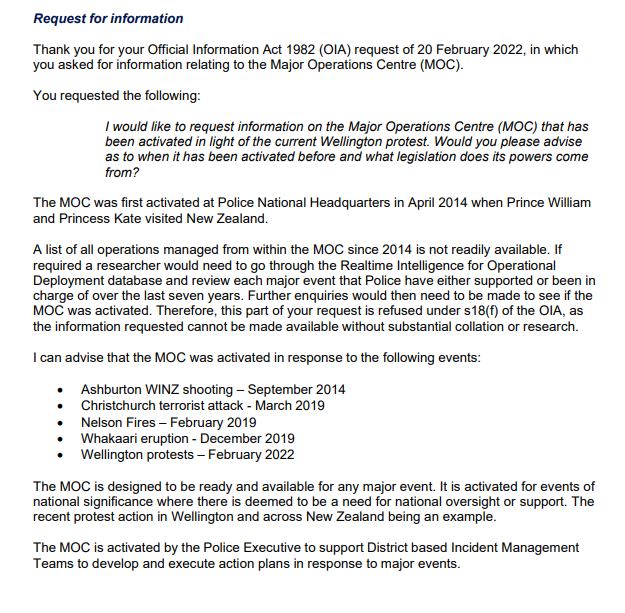
A page of the OIA response from NZ Police.
All up, the MOC has been activated six times in eight years:
- Royal visit: Prince William and Princess Kate – April 2014
- Ashburton WINZ shooting – September 2014
- Christchurch terrorist attack – March 2019
- Nelson Fires – February 2019
- Whakaari eruption – December 2019
- Wellington protests – February 2022
Interestingly, most of the reasons for activations are terrorism and natural disaster. Nationwide visits with very high security required for the royal couple would appear reasonable to many. However, having a peaceful and well-organised protest for almost the entirety of the time seems to be less requiring of highest level operational control than a terror attack or natural disaster. Even the Christchurch murders did not see such power.
The police have advised that “The MOC is designed to be ready and available for any major event. It is activated for events of national significance where there is deemed to be a need for national oversight or support. The recent protest action in Wellington and across New Zealand being an example.”.
They continue:
“The MOC is activated by the Police Executive to support District based Incident Management Teams to develop and execute action plans in response to major events.”
And therein lies a clue to what went wrong in the last days.
The quote “to develop and execute action plans in response” has a chilling sound to this writer. This piece may explain the significant escalation in police violence, and some might say police brutality, that saw violence escalate on both ‘sides’, with fire, destruction and injuries being the order of the day.
Indeed the Independent Police Conduct Authority (IPCA) has received nearly 1900 complaints, and the law obligates the IPCA to investigate such:
There is, however, concern around this scope. The scope guidelines may be used to remove the majority of complaints, especially as some of the wording is carefully constructed, possibly for its own desired narrative.
“Nearly 1900 complaints have been received to date. Many are from individuals who were not present at the Protest but concerned about Police actions or inactions. Some are from individuals who were physically present and made complaints about specific or more general Police activities, such as the lawfulness of their powers, use of force, or particular tactics and treatment in custody.”
The IPCA review will be allegedly be completed by the end of March 2023.
2023 is the election year for New Zealand.

